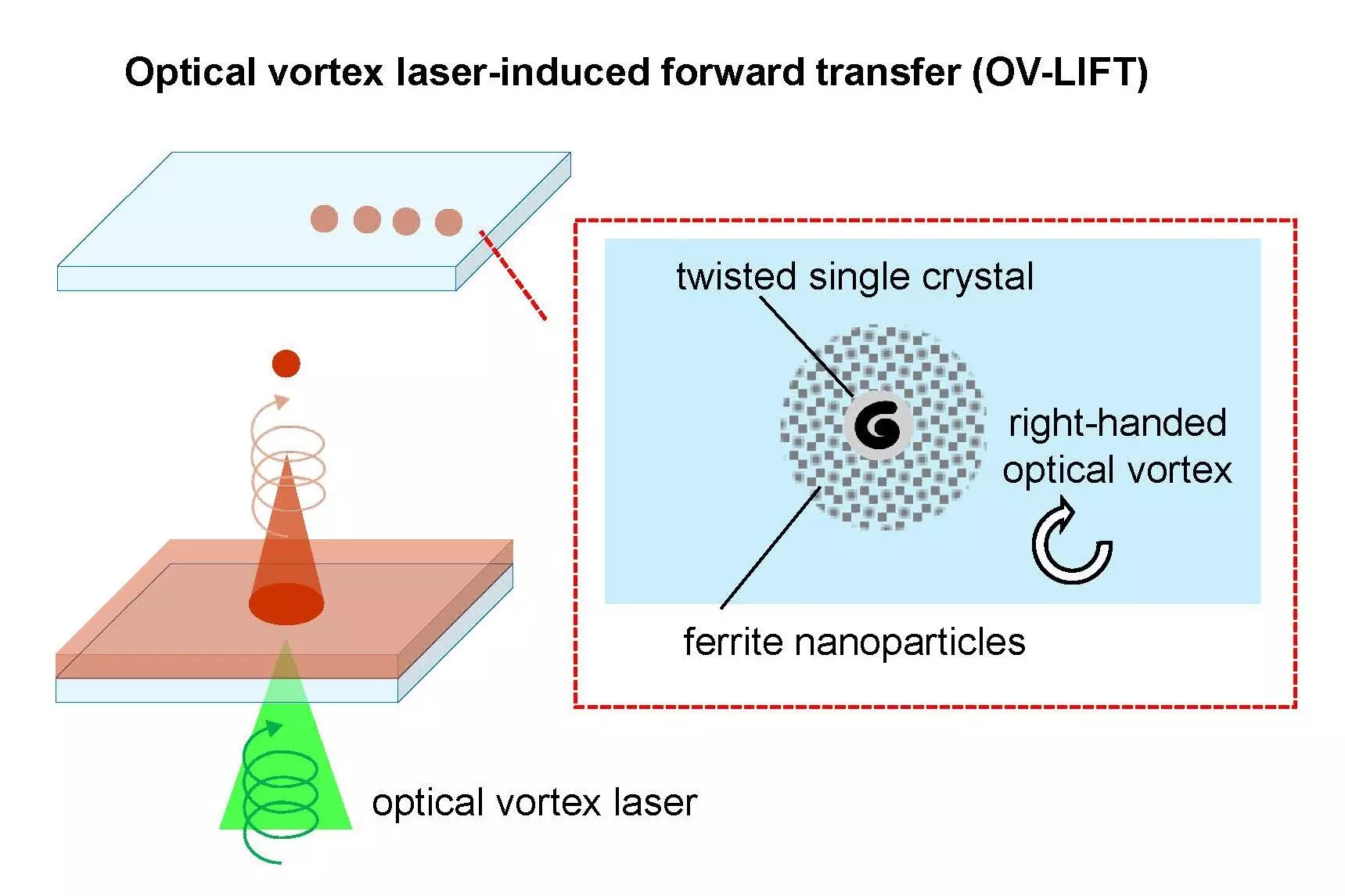In a world dominated by digital technology, it is easy to overlook the significance of printing technology. However, a recent study led by a team at Osaka Metropolitan University has demonstrated the continued relevance and potential of printing technology. The team has developed a new printing technique, known as OV-LIFT, for creating printable magnetic devices for high-density data storage.
Dr. Ken-ichi Yuyama and his colleagues utilized a laser-induced forward transfer (LIFT) method for laser printing, incorporating an optical vortex for precision. By shining a laser beam onto a spatial light modulator and through a quarter-wave plate, the researchers were able to convert the beam into a circularly polarized optical vortex. This focused beam was then directed onto a plate containing magnetic ferrite nanoparticles, resulting in high-precision printing of magnetic crystals.
One of the most compelling aspects of this research is the ability to control the helical structure of the printed crystals by adjusting the optical vortex’s helicity. This innovation opens up possibilities for fine particle patterning and single crystal synthesis, leading to the development of new materials with unique properties. Dr. Yuyama emphasizes the potential impact of this technology beyond data storage, highlighting its potential for material science advancements.
As the field of printing technology continues to evolve, the development of printable magnetic devices for data storage represents a significant step forward. The ability to achieve high-density data storage through innovative printing techniques has the potential to revolutionize the way we store and access information. With further research and refinement, printable magnetic devices could become a key component of future technology solutions.
The research conducted by the team at Osaka Metropolitan University showcases the ongoing relevance and importance of printing technology in the digital age. The development of OV-LIFT and its application in creating printable magnetic devices for data storage highlights the potential for innovation and advancement in this field. As we look towards the future, printable magnetic devices could play a crucial role in shaping the technology landscape and driving progress in data storage capabilities.


Leave a Reply